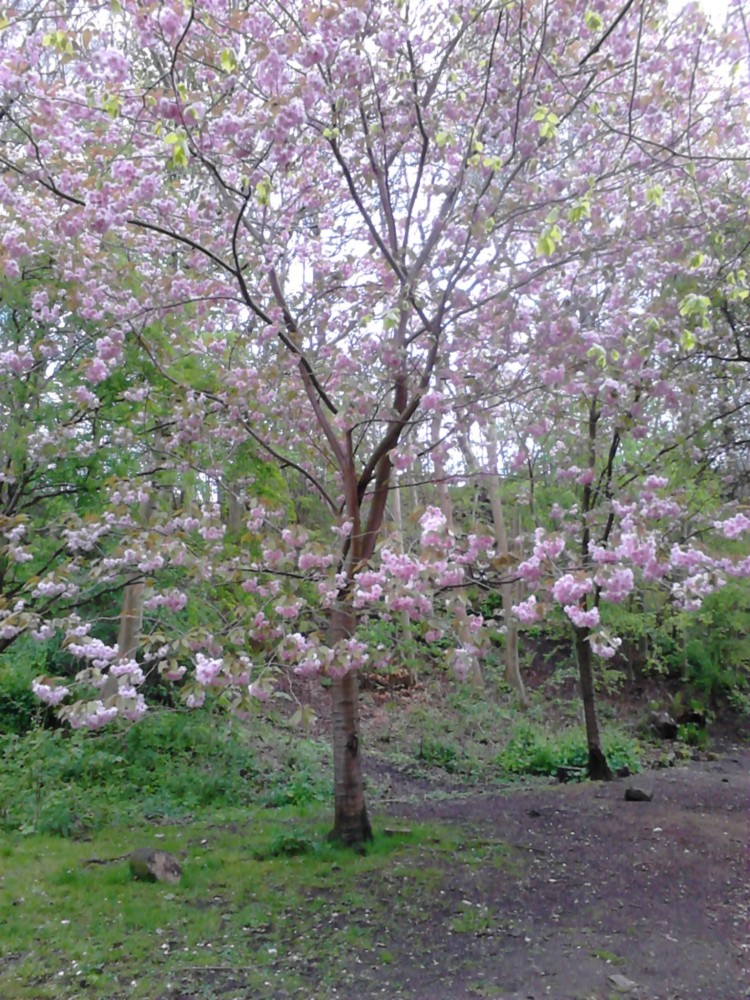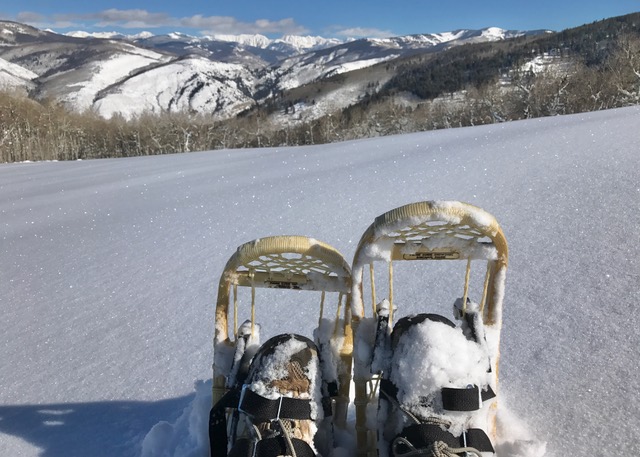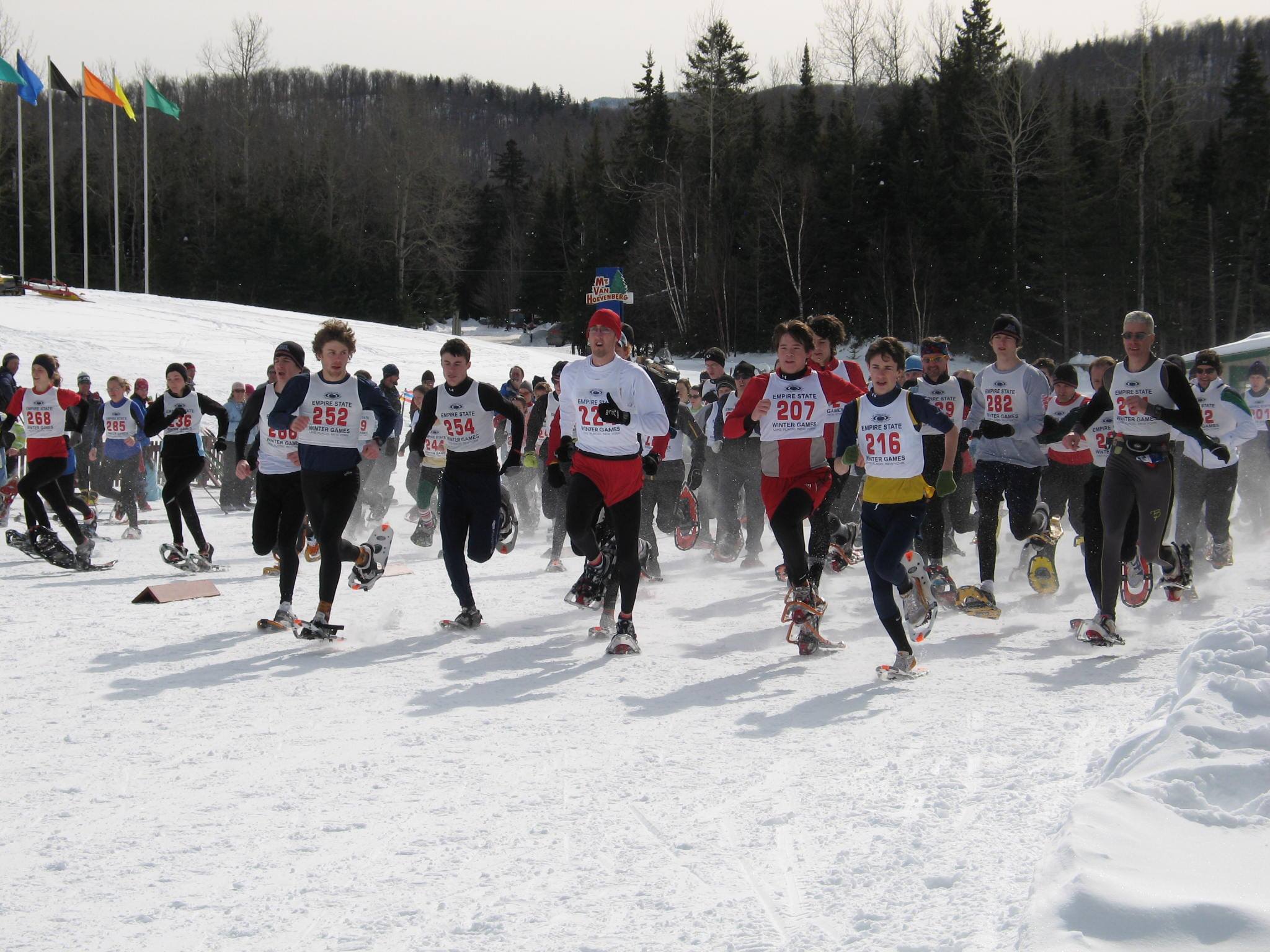I woke up to the unexpected sound of a snowplow going by the motel room, got up and looked out the window to find about four inches of new powder on my van. (By agreement with my wife, now that I am over 50, when I am solo I either stay in a motel, hostel or campground.)
I switched on the TV, although the only station I would find was a translator for the Twin Cities CBS affiliate, 200 miles away. The morning weather guy went on and on about some fundraiser he and the traffic gal were involved in, but when he finally got to the state-wide radar, I could see that the bulk of the storm was past the area I was in. I got dressed and headed across the parking lot to the Gosh Dam Place (a restaurant, bar and motel/hostel on the road to the dam on Lake Winnebigoshish) for a hearty breakfast.
After breakfast, I cleared the snow off my Multi-Activity Support Vehicle (an AWD Dodge mini-van.) and headed six miles up the road to the Simpson Creek Primitive Area for the second day of a two day visit. I have only been up to Simpson once other time in the winter, the previous year for a Candlelight Ski Event, and was anxious to experience more of it. During the summer, I have been a trail patrol volunteer at Simpson Creek for over five years.
Our volunteer group, the Backcountry Trail Patrol, was initially formed to help the U.S. Forest Service maintain the mountain bike trails in the Cutfoot Sioux Lake area, where the Simpson trails are located, and we expanded to do ski and snowshoe patrols in other venues over the past couple years. The trails at Simpson are not groomed, and are open to both cross-country/backcountry skiing and snowshoeing, as well as winter hiking. The day before I had been in the Primitive Area for a couple of hours, and found that the trails were icy, crusty and definitely not very good skiing. Unfortunately, conditions were so crusty that they even made for poor snowshoeing, and caused my wood framed shoes to slip without crampons bolted on. The night’s snow would make travel a lot more enjoyable.

Back in the early 1900s, Sam Simpson had the logging contract for the Cutfoot Sioux area. His main camp was located near what we now call “Simpson Creek”. Today, the US Forest Service manages the same area as one accessible by human-powered transportation only. No ATVs, snowmobiles, dirt bikes or even horses are allowed in the Primitive Area. Hikers, mountain bikers, skiers and snowshoers are all welcome on the 13 miles (20 Km) of trails at Simpson Creek. The trails wind though tall pines, white birch and old oak trees, often overlooking Cutfoot Sioux Lake. In addition to the Simpson trails, winter visitors can also enjoy the 18-mile long Cutfoot Sioux National Recreational Trail, which is primarily an equestrian trail during the summer, but seems to have seen little or no use over the course of the winter. The Cutfoot trail passes through the center of the Simpson Creek trail system, then makes a loop around the Cutfoot Sioux Experimental Forest, starting and ending at the visitor center on MN Hwy. 46. You can also access the Simpson Creek trails from the either end of the visitor center parking lot, but my favorite access point is the “A” trailhead and parking area, just west of Simpson Creek on Eagles Nest Road.
I think 2005 has been a very good year for snow in the Chippewa National Forest, and I found many areas with two feet or more of snow on them. As I had surmised, the trails were now perfect for snowshoeing, with three to four inches of new snow on top of six inches to almost three feet of old, corn snow with a crust. With temperatures hanging just below freezing, and the sun peaking through the clouds, I strapped on my snowshoes, put my pack on my back, Stetson on my head and was off for a nice solo hike.
The last time I was snowshoeing, it was with my wife in the Superior National Forest, between the Boundary Waters Canoe Area (BWCA) Wilderness and Lake Superior’s north shore, about 200 miles east of where I was now. We were carrying two pair of snowshoes and three pair of skis, and had initially planned to ski the loop around Flathorn Lake. The snow in that part of Minnesota was even deeper than that which I was traversing today, and my wife was having trouble controlling my Trak Bushwacker skis, along with balancing her camera and tripod, so I suggested that she change to snowshoes. However, since the bindings on her old pair were broken, she would have to use mine. We swapped, and were on our way. All of a sudden, Ellen discovered that she could stop to set up and take pictures without having to worry about her feet sliding out from under her. Hills were no longer daunting, and when she wasn’t taking photos, she could pretty much keep up with the pace I set on my skis. For me, the switch was also ideal; since this was a trail system almost designed for the Bushwackers, and I had a blast. When we were done, she looked across the van at me and said, “I think I like snowshoeing a lot more than skiing.” I figured, okay…we’ll upgrade your gear.

But that was last month, and my wife was 200 miles to the south, in our Twin Cities home. Cell phones barely worked out here, if at all. The visitor center was closed. Any pictures of me had to be taken with a timer, because I was on my own. Understand, that is not a problem to me. I was carrying the entire “10 Essentials” in my pack, was very familiar with the trails, and have been snowshoeing for 35 years or more. I was just reveling in the day. Then I tripped.
Probably the only thing worse than falling with your snowshoes and feet folded up behind you would be being stuck in that position and getting a “Charlie horse” in your thigh. Of course that was exactly what happened. Here I am in three feet of snow, my legs folded behind me and intense pain growing in my left thigh. I sat there for a sec, and thought “Well, isn’t this a fine predicament?”
The only time I could remember being in a similar spot, was years back when we lived in the east. I was training a new search and rescue dog with a friend of mine in Vermont, and I got stuck in the snow well under a spruce tree. The big difference that time was that I had my legs to propel me up onto the snow, and here my legs were folded and cramping. But the concept was a good one. I figured if I could get my body horizontal, I could get my legs in a position to push out on the snowshoes, roll onto my back, and then get up. It worked, but message to self…next time take off the daypack first! Once I got my leg straightened out, the cramp eased, and I was able to get back on my feet. I proceeded on. (I love that line! It’s from the journals of Lewis and Clark.)
Was I ever in any real danger? Given my level of experience and the conditions, probably not, but I also am (hopefully) smart enough to realize it could have been different. Thankfully, I enjoyed the rest of my hike, made it back to the MASV where I had left my lunch, and headed back home, none the worse for wear.
Moral of the story: Always carry the 10 Essentials when you hike, ski or snowshoe. You never know when your life may depend on them. They are: 1) Navigation (map and compass) 2) Sun protection (sunglasses and sunscreen) 3) Insulation (extra clothing) 4) Illumination (headlamp, flashlight, bulb and batteries) 5) First-aid kit (with warming packs) 6) Fire (fire starters and matches/lighter) 7) Repair kit and tools (including knife or multi-tool) 8) Nutrition (extra food) 9) Hydration (extra water) and 10) Emergency shelter.






